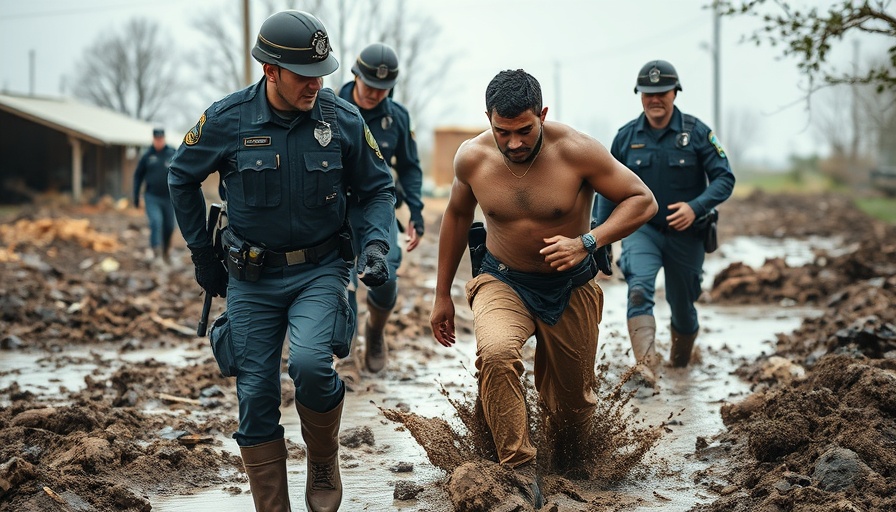
The Tension of Domestic Disputes: A Routine Call Turns Deadly
In a chilling incident that unfolded in Cottonwood, Arizona, a routine domestic dispute call escalated into a tragic confrontation, resulting in the fatal shooting of a suspect by police officers. On April 27, the Cottonwood Police Department responded to a 911 call from a woman reporting that her husband was 'raging' and had access to firearms. This situation highlights the ever-present dangers police officers face, even during seemingly standard calls.
Body Cameras: A Double-Edged Sword in Law Enforcement
The deadly confrontation underscores the critical role of body-worn cameras (BWCs) in modern policing. While they provide transparent documentation of encounters between police and civilians, they also capture harrowing moments, such as those revealing the split-second decisions officers must make in life-threatening situations. In this instance, footage released by the Cottonwood PD shows the deadly moment the suspect emerged from his bedroom with a shotgun, forcing officers to respond decisively to protect themselves and the public.
Understanding Officer-Involved Shootings: The Pressing Need for Training
Officer-involved shootings are among the most scrutinized incidents in law enforcement. They often ignite debates over police use of force, tactics, and accountability. In light of this tragic incident, police departments must prioritize thorough training programs that prepare officers for high-stakes scenarios. This includes how to effectively negotiate during domestic disputes and mitigate risks before they escalate. Agencies must also provide mental health support to help officers process these experiences, given the potential long-term psychological impacts.
The Role of SWAT Teams: Essential or Excessive?
In cases like this, the deployment of a SWAT team raises questions about the escalation of force and the readiness of these specialized units to intervene in domestic situations. Some argue that relying on SWAT for negotiations can exacerbate tensions. However, when faced with armed suspects, having a tactical team ready can be a lifesaving measure for officers and bystanders alike. This incident exemplifies the delicate balance police must navigate between maintaining safety and exercising restraint.
Community Engagement: Rebuilding Trust Following a Shooting
After a police shooting, community trust can be severely tested. Departments must engage proactive communication strategies, similar to what other regions like Minneapolis have implemented, to reassure the community of their commitment to transparency and accountability. Providing detailed explanations of the incident, alongside utilizing BWCs, can foster dialogue between law enforcement and citizens, highlighting that these measures aim to enhance public safety and building community-police relations.
Looking Forward: The Future of Police Technology and Safety Protocols
As police departments face increasing scrutiny regarding use of force and officer-involved shootings, innovation in policing technology remains critical. Advances in AI analytics and non-lethal force options could offer alternatives that defuse potentially volatile situations without resulting in fatalities. Additionally, encouraging mental health resources for officers can enhance officer wellness and improve community interactions.
This incident poses critical questions for the future of policing and safety. It challenges police departments to adopt reforms that prioritize de-escalation, community engagement, and officer wellness while also addressing societal perceptions of policing. Continuing the dialogue around responsible use of police technology and training will help enhance law enforcement's effectiveness against the backdrop of rising public awareness.
As communities grapple with the implications of incidents like this one, law enforcement agencies must not only address their tactical responses but also how they engage with the populations they serve. Efforts at police reform, officer safety, and community relationships are essential to restoring and building trust.
Call to Action: As policing evolves, let’s encourage discussions around innovative training programs that foster safer interactions between law enforcement and the community. Together, we can enhance public safety while addressing the deeper issues of accountability and trust.
 Add Row
Add Row  Add
Add 

 Add Element
Add Element  Add Row
Add Row 




Write A Comment